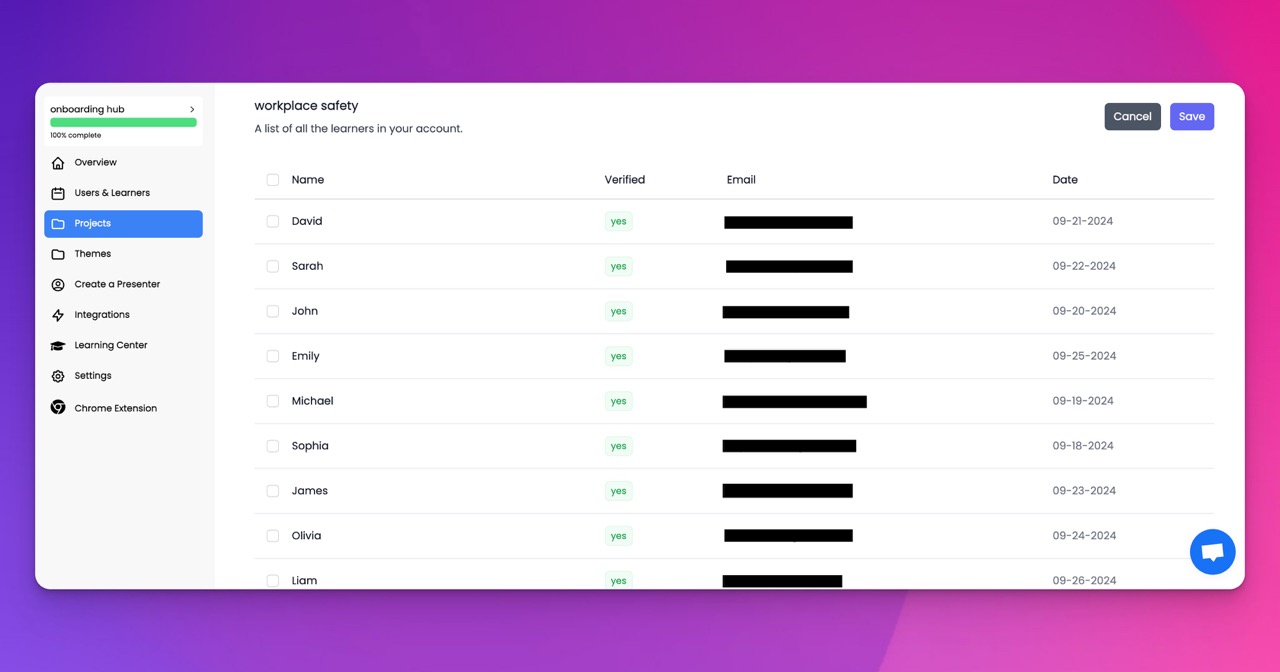🎉 Trainday now integrates with Zendesk and Hubspot 🎉 Trainday now integrates with Zendesk and Hubspot 🎉 Trainday now integrates with Zendesk and Hubspot
🎉 Trainday now integrates with Zendesk and Hubspot
Contact
Hospitals And Healthcare
"How AI Revolutionizes Learning & Training in Hospitals: Unveiling Text to Video with Voice AI"
How AI Revolutionizes Learning & Training in Hospitals: Unveiling Text to Video with Voice AI
In the fast-paced world of healthcare, continuous learning and training are essential to stay updated with the latest advancements and ensure the highest level of patient care. Traditionally, hospitals have relied on various methods to deliver training, such as in-person lectures, written manuals, and online modules. However, these methods often fall short in engaging learners and providing a comprehensive understanding of complex medical concepts.
Enter Artificial Intelligence (AI), a game-changer in revolutionizing learning and training in hospitals. One of the most exciting applications of AI in this domain is the creation of learning and training videos. With AI-powered technologies such as Text to Video with Voice AI, hospitals can now provide dynamic and interactive learning experiences like never before.
So, how does AI utilize Text to Video with Voice AI to enhance learning and training in hospitals? Let's explore some key benefits and applications.
1. Enhancing engagement: Traditional learning materials often lack the engagement factor necessary to capture learners' attention. AI-powered videos, on the other hand, can provide a visually stimulating and interactive experience. By converting text-based information into engaging videos, hospitals can better captivate learners, increasing their motivation and retention of knowledge.
2. Simplifying complex topics: Medical concepts can be challenging to comprehend, especially for those new to the field. AI-powered videos can break down complex topics into easily digestible visual representations, simplifying the learning process. By using animations, graphics, and voice-overs, hospitals can ensure that learners grasp even the most intricate medical concepts.
3. Standardizing training: In a hospital setting, consistent training is crucial to maintain a high standard of care across all staff members. AI-powered videos provide a standardized training experience for all learners, ensuring that everyone receives the same level of information and guidance. This consistency helps reduce variations in practice and enhances patient safety.
4. Accessibility and flexibility: With AI-powered videos, hospitals can offer training materials that are accessible anytime, anywhere. Learners can access these videos on their preferred devices, allowing them to learn at their own pace and convenience. This flexibility is especially valuable in the healthcare industry, where professionals often work long and irregular hours.
5. Personalization: AI-powered videos can also adapt to individual learners' needs, providing a personalized learning experience. By analyzing learners' progress and understanding, AI algorithms can tailor the content and pace of the videos to suit their unique requirements. This personalized approach maximizes learning outcomes and ensures efficient knowledge transfer.
The applications of AI-powered videos in hospitals are vast. They can be used for a wide range of purposes, from training healthcare professionals on new medical procedures to educating patients about their conditions and treatment plans. Furthermore, AI can analyze learners' interactions with the videos, providing valuable insights to trainers and administrators to improve the effectiveness of future training programs.
However, it is important to note that AI-powered videos should not replace human interaction and mentorship entirely. They should be seen as a complementary tool that enhances traditional training methods and facilitates continuous learning.
In conclusion, AI is revolutionizing learning and training in hospitals through the use of Text to Video with Voice AI. By leveraging this technology, hospitals can enhance engagement, simplify complex topics, standardize training, offer accessibility and flexibility, and provide personalized learning experiences. As AI continues to advance, we can expect even more innovative applications that will transform the way healthcare professionals learn and deliver patient care.
Accelerate Compliance.
Deliver OSHA-Ready Courses Instantly.
Empower your team with data-driven training solutions tailored to your industry's safety standards. Stay compliant, reduce risks, and boost productivity with AI-powered course creation.
